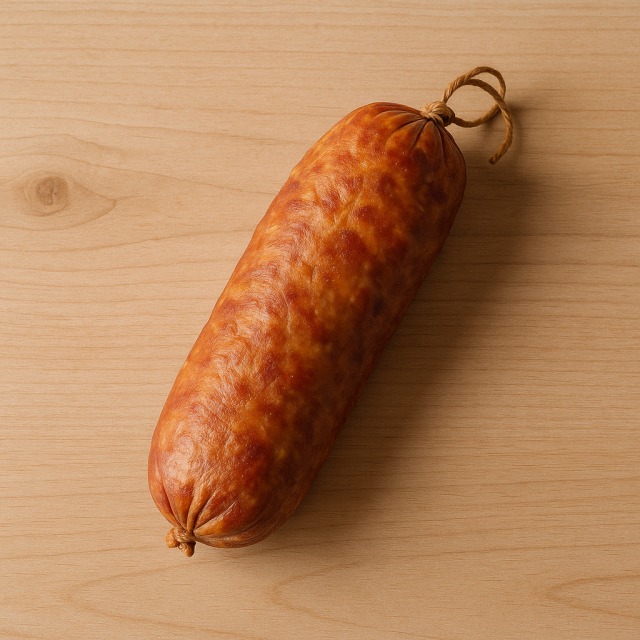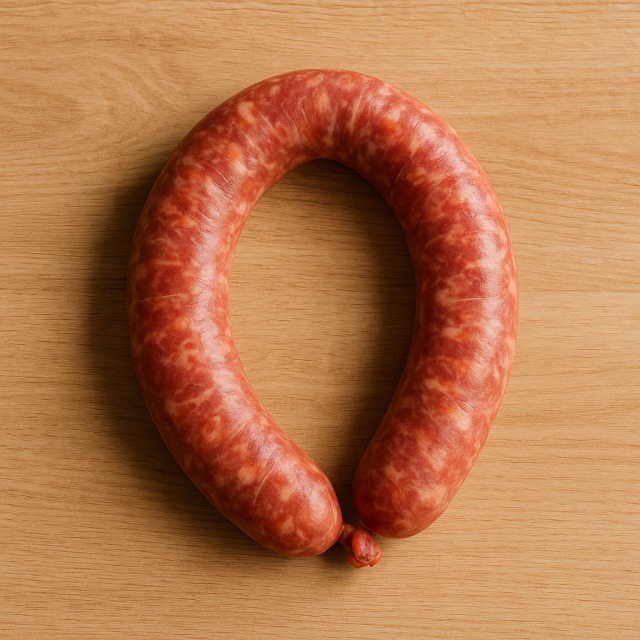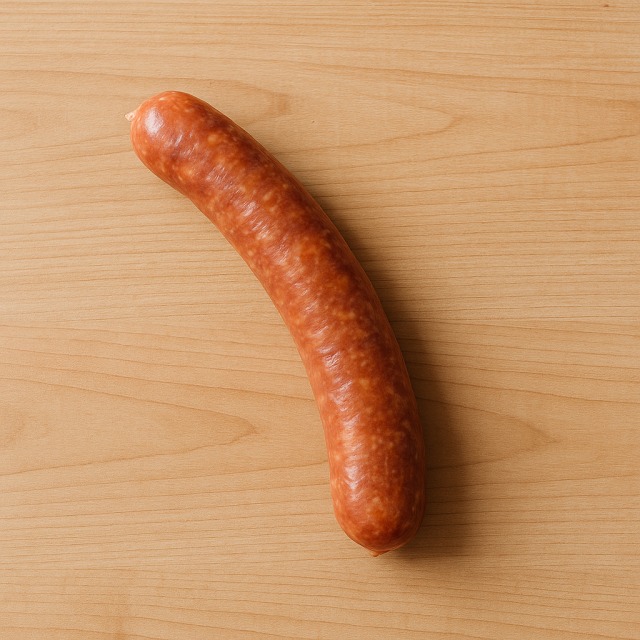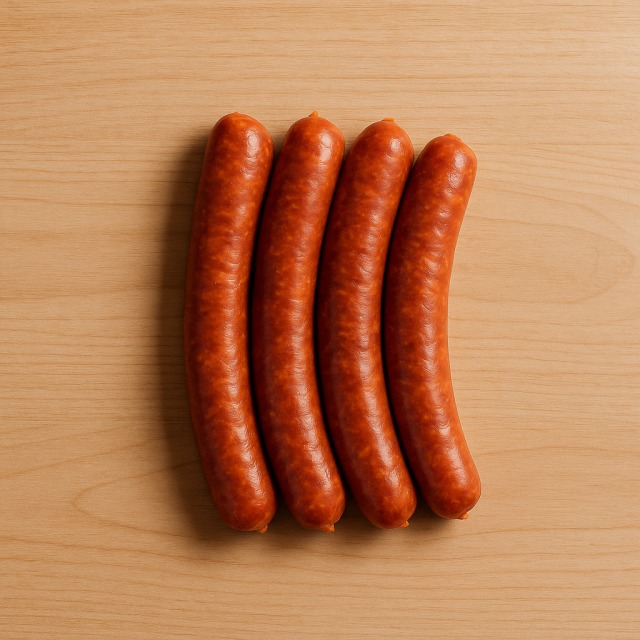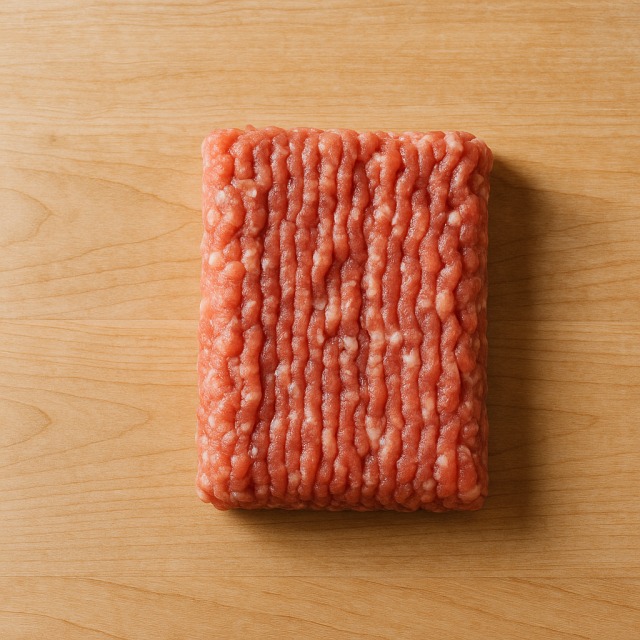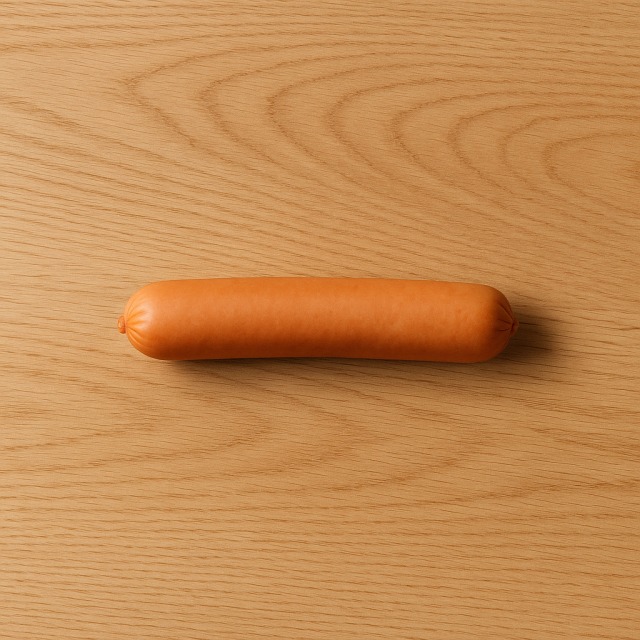Calorie Chart / Meat & Eggs / Sausage - Montbéliard
How Many Calories Are in Montbéliard sausage?
Calculation of the nutritional value & Recommended Dietary Intake of Montbéliard sausage
For g and a calorie requirement of kcal
| Calories 506 kcal | Proteins 21 g | Lipids 47 g | Carbohydrates 0.8 g |
| 25% | 28% | 70% | 0% |
Health benefits of Montbéliard sausage
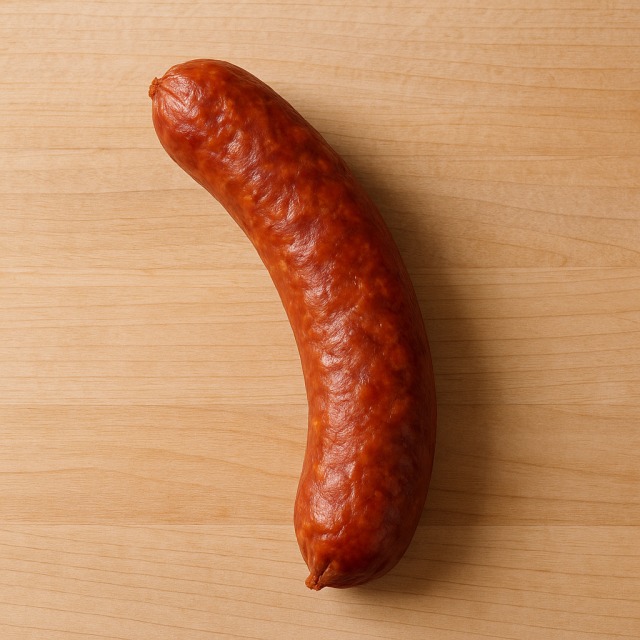
Montbéliard sausage - 100g
Calories 337 kcal
Proteins 14 g
Lipids 31 g
Carbohydrates 0.5 g
Montbéliard sausage is a protected-geographical-indication product smoked over conifer and juniper wood in Franche-Comté. With 337 kcal per 100 g, it is clearly a high-calorie delicacy, yet its calories come with interesting nutrients: the 14 g of proteins supply all essential amino acids, while the pork meat provides vitamin B1, vitamin B12, and niacin that support energy metabolism and the nervous system. Its calories are also accompanied by heme iron and zinc, minerals that help fight fatigue and contribute to immune defense. Selenium, naturally present in pork, offers antioxidant properties. Thanks to its firm texture and smoky flavor, a moderate portion delivers prolonged satiety, which can prevent excessive calorie snacking later in the day.
Because of its generous calories and 31 g of lipids, the sausage is energy-dense and therefore suited to outdoor workers, hikers, or athletes in a bulking phase. The traditional recipe uses only shoulder and belly, natural gut, and salt, with no lactose or gluten, making it an option for people with those specific intolerances. Historically, smoking was a way to preserve meat during the cold Jura winters; the result is a unique taste that allows you to use less added fat or sauce, indirectly saving calories in the overall meal. Enjoy it occasionally as part of a balanced diet and remember to adjust the rest of the day's calories accordingly.
Tips for incorporating Montbéliard sausage into a balanced diet
To keep calories under control while enjoying Montbéliard sausage, combine one grilled link (remove excess rendered fat) with a warm salad of lentils and diced carrot; the fiber will increase fullness so you may naturally reduce total calories at the next meal. Another idea is to slice the sausage thinly and add it to a bowl of steamed broccoli or green beans, using the smoky aroma to season the vegetables without extra butter, again trimming calories overall. For a comforting winter dish, pair half a sausage with homemade mashed potatoes but use semi-skimmed milk to lighten the calories, or opt for a cabbage base similar to sauerkraut with meat, replacing part of the other meats with extra fermented cabbage to dilute calories per bite.
If you need a post-workout refuel, mix diced sausage into a tomato, pepper, and onion stir-fry, then serve over brown rice; you get fast proteins and slow carbohydrates while keeping an eye on calories by limiting the sausage portion to 60 g. Lovers of regional recipes can prepare a "potée comtoise": simmer Montbéliard sausage with potato, turnip, and leek, but double the vegetables and halve the sausage length to balance calories. Whichever recipe you choose, remember to weigh your portion so that the dish fits the day's calorie target.
Frequently Asked Questions
- How many calories are in Montbéliard sausage?
- There are 337 kcal per 100 g, a figure to remember when you need to budget your daily calories.
- Is Montbéliard sausage higher in calories than Morteau sausage?
- Yes, Montbéliard sausage generally contains slightly more calories because it has a higher average fat content, but the difference rarely exceeds 20 kcal per 100 g.
- Can I eat Montbéliard sausage when I am counting calories for weight loss?
- You can, provided you limit the portion (40–60 g) and surround it with low-calorie foods such as zucchini ribbons or a bowl of vegetable soup; this keeps total meal calories in check.
- What is the best cooking method to reduce calories?
- Grilling or oven-baking on a rack lets excess fat drip away, trimming the final calories by 10–15%. Avoid pan-frying in oil, which adds extra calories.
- How do the proteins and fats break down in those 337 kcal?
- Roughly 56 kcal come from proteins (14 g × 4 kcal), while about 279 kcal come from fats (31 g × 9 kcal). The remaining calories derive from trace carbohydrates. Knowing this macronutrient split helps you plan the rest of your calories for the day.
Similar foods
Information provided by Calorie Menu may contain inaccuracies or errors. It cannot, under any circumstances, substitute medical advice or medication.
